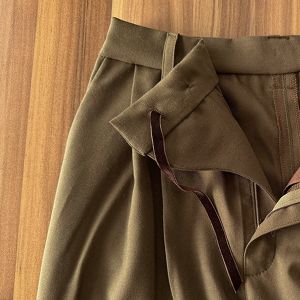I haven’t posted before so am not sure which of the forums is the best place to ask about tailor’s chalk. So this is already on the Teach yourself to Sew forum.
I will be teaching a beginning sewing class for a store that specifies what I must teach. Use of tailors chalk is on their list. I just never use it–still have some in the original packages that is decades old. If you have any thoughts on how it is used to transfer darts and other pattern markings–if it IS used that way, I would love to hear how you do it. I have googled–the sites I’ve found just say what it is–but the preference for transferring marks seems to be dressmakers carbon and tailors tacks. Thanks for any suggestions on the tailors chalk!
Ruth



























Replies
I use tailor's chalk only for the two following applications:
1) when I have prepared a muslin of a garment and am doing the fitting of the muslin to the wearer. For example, I am currently working on a vest for a friend. She has asymetrical sloping to her shoulders and the vest muslin needs to be adjusted. I had her try on the muslin (right side out) and then pin fitted it to reflect the differing amounts to remove. I then used the tailor's chalk to mark the new stitching line on the wrong side of the fabric - also straightening out the grade of the reduction. I find that I can do this quite quickly with the chalk.
and
2) when making pants for myself, I need my husband's help in marking the waistband as I have to make adjustments to the pattern to lengthen the front seams. By tying an elastic about my waste, he can easily mark the location and I can then translate that into where I need to sew on the waistband.
I don't use it in other situations as I have found other items more effective. I suspect that with beginner sewers the making of a muslin is a whole separate issue. I remember when I was young and just starting - taking the time to make one just seemed like such a waste of time. Lesson learned the hard way.
The tailor's chaulk was the only marking tool other than a lead pencil when I started Home Ec. sewing nearly 50 yrs. ago. Since the lead pencil did not wash out, then the chaulk was the best choice and was used to transfer all markings to the patterns. Our teachers never encouraged using the tracing wheel/paper 'cause it did not always wash out. You can use the chaulk corner to mark darts or other circles. I never use it because we many more choices now. My personal favorite is a soap sliver as it always washes out, is a good price and best of all it makes a fine line.
Liz
I too use the soap slivers now. I use the tracing wheel/paper as well. I know they don't always wash out so use it only on fabric that I know it will come out. However, I don't like the new papers. They are too chalky for me. I did like the waxy versions much better so that is why I use the soap route most of the time now.
I used to work in a tailor shop and we used the wax version of tailor's chalk almost exclusively -- only using chalk on fabrics (silks, leathers, certain polyesters,etc.) that the wax wouldn't disappear from when pressed (always test first!). The wax is less expensive, easier to sharpen, leaves a finer, more precise mark (with better staying power than chalk), 'drags' less on most fabrics and is fast to use. We did hundreds of pant hems, and using wax and a ruler was the easiest way to indicate cut and fold lines. That being said, for home sewing, I have chalk (two kinds: the regular wafer and the powder chalk Chaco dispenser) - but rarely use either, wax (yellow and white), soap slivers, and dressmakers carbon (regular and disappearing), plus diappearing (fading) pens and water-soluable (sp?) pens. I am a bit of a nut when it comes to stuff - but each of these has its applications and I have used them all.
Our tailor shop did mostly alterations on ready-made items. To transfer markings (using either wax or chalk), we would mark the top layer- (very few marks unless it was imperative that a particular stitching line was to be employed) and then 'hold' the fabric with a ruler at the marking, flip the fabric over the ruler and mark the bottom fabric - this method works wonderfully with hems (except that they would be marked on the right side of the fabric) and other realtively short, straight lines. It's important the the chalk /wax be very sharp when using this method.
Hope this helps,
Kay
I use waxless chalk on a kilt I'm making. It needs to be brushed out at the end without leaving a mark. In apparel sewing I use tailors' tacks quite a bit. I use 3M "paper tape" to hold them in place--just get the the tape off BEFORE pressing! Something I learned the hard way.
Jane
This post is archived.